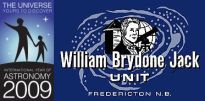You are here
Light trespass
Light trespass occurs when unwanted light enters one's property, for instance, by shining over a neighbor's fence. A common light trespass problem occurs when a strong light enters the window of one's home from the outside, causing problems such as sleep deprivation or the blocking of an evening view. A number of cities in the U.S. have developed standards for outdoor lighting to protect the rights of their citizens against light trespass. To assist them, the International Dark-Sky Association has developed a set of model lighting ordinances.[7] The Dark-Sky Association was started to reduce the light going up into the sky which reduces visibility of stars, see sky glow below. This is any light which is emitted more than 90° above nadir. By limiting light at this 90° mark they have also reduced the light output in the 80–90° range which creates most of the light trespass issues. U.S. federal agencies may also enforce standards and process complaints within their areas of jurisdiction. For instance, in the case of light trespass by white strobe lighting from communication towers in excess of FAA minimum lighting requirements[8] the Federal Communications Commission maintains an Antenna Structure Registration database[9] information which citizens may use to identify offending structures and provides a mechanism for processing consumer inquiries and complaints.[10] The US Green Building Council (USGBC) has also incorporated a credit for reducing the amount of light trespass and sky glow into their environmentally friendly building standard known as LEED. Light trespass can be reduced by selecting light fixtures which limit the amount of light emitted more than 80° above the nadir. The IESNA definitions include full cutoff (0%), cutoff (10%), and semi-cutoff (20%). (These definitions also include limits on light emitted above 90° to reduce sky glow.)
